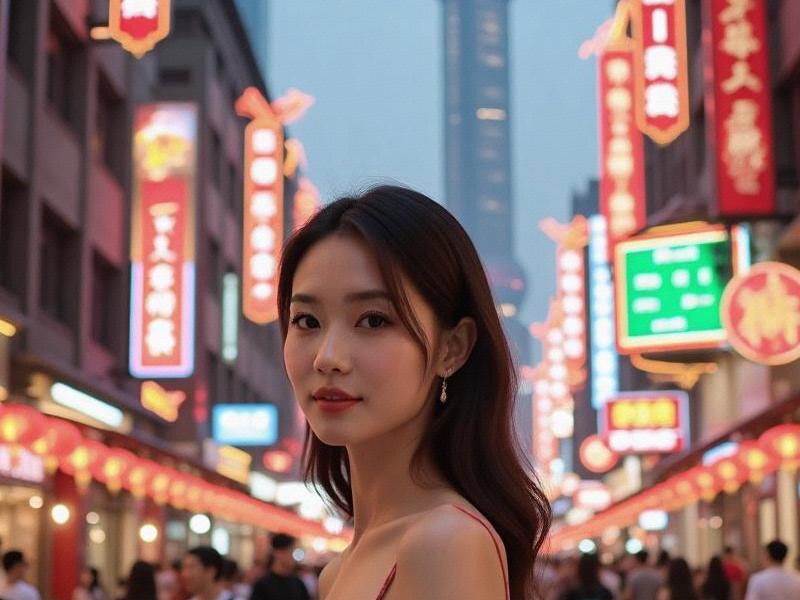
The Shanghai Beauty Paradox
At 7:30 AM on a weekday morning, the dance studios of Jing'an District come alive with women practicing ballet moves before work. By noon, the private dining rooms of Three on the Bund host power lunching female executives discussing deals in flawless English. Come evening, the cocktail bars of Found 158 showcase fashion influencers mixing vintage qipao with avant-garde accessories. This is the multifaceted reality of Shanghai's modern woman - simultaneously rooted in tradition and radically reinventing it.
Historical Foundations
Shanghai's beauty standards trace back to its 1920s heyday as the "Paris of the Orient." The "Shanghai Girl" calendar paintings by artists like Hang Zhiying established lasting ideals: porcelain skin, willowy figures, and an air of educated refinement. What's changed is how contemporary women achieve these standards. Where grandmothers used pearl powder, granddaughters now employ LED light therapy. The quest for pale skin has evolved from avoiding sun exposure to sophisticated SPF 50+ products with blue light protection.
爱上海同城419 The New Beauty Economy
Shanghai's beauty industry generates ¥87 billion annually, with women spending 23% more on appearance than the national average. The city boasts China's highest concentration of aesthetic clinics (1 per 18,000 residents), but with a distinctive approach. Dr. Wang Li of Renai Hospital observes: "Beijing women want dramatic changes, Guangzhou prefers subtlety. Shanghai patients bring photos of their younger selves - they want to look like idealized versions of their natural features."
Fashion as Cultural Dialogue
The clothing racks of Labelhood, Shanghai's premier fashion incubator, tell a story of cultural fusion. Young designers like Susan Fang reinterpret cheongsam elements into contemporary silhouettes. "Shanghai women understand fashion as language," explains Vogue China editor Margaret Zhang. "They'll pair a ¥30,000 Hermès bag with ¥300 silk pajama-style pants from a local market - it's about mixing hierarchies to crteeasomething uniquely theirs."
上海龙凤sh419 Career and Family Calculus
With 62% of managerial positions occupied by women (compared to 41% nationally), Shanghai leads China's gender revolution. Yet traditional expectations persist. Matchmaking corner at People's Park still lists women's ages and cooking skills alongside MBAs and stock portfolios. The difference? Modern Shanghainese women approach arranged meetings like corporate networking. Finance executive Lu Jing, 33, laughs: "I treat my mother's matchmaking attempts as free headhunting services - you never know who might introduce your next business partner."
Global Influencers
上海品茶网 Shanghai-born celebrities like actress Fan Bingbing and Olympic swimmer Liu Xiang have become international beauty ambassadors, but the real trendsetters are micro-influencers like skincare blogger "ShanghaiPixie" (2.7M followers). Her viral video comparing French luxury creams with traditional Chinese medicine (TCM) ingredients garnered 18M views, exemplifying the Shanghai woman's pragmatic approach to beauty.
The Future of Shanghai Femininity
As the city prepares to host the 2025 World Expo, its women stand at the forefront of redefining Chinese femininity. In Shanghai's beauty studios, TCM masters consult with dermatologists. In its boardrooms, female executives implement "soft power" leadership styles blending Confucian harmony with Western decisiveness. On its streets, grandmothers in pajamas cheerfully debate skincare routines with fashion students.
This is the essence of Shanghai's feminine mystique - not the abandonment of tradition, but its thoughtful evolution. In a city that rebuilt itself from fishing village to global metropolis within a century, women have mastered the art of carrying cultural memory while writing bold new chapters. Their beauty secret? Knowing precisely which parts of the past to preserve, and which to gently let go.
